Of Emus and Fairy-wrens
Photographing Australia’s Endemic Birds
Monthly Newsletter
October 2006
Once again, I am sitting next to a campfire writing a newsletter. This time I am in Border Ranges National Park just over the border into New South Wales and have sought shelter from the rain that has been falling for several days now. While the rain has been frustrating photographically, it has provided me with an opportunity to catch up on some much needed sleep as well as other things like this newsletter. Even though this newsletter is going to be sent out nearly a third of the way through November, I have decided just to cover October.
Most of October was spent in the outback of Queensland, South Australia, and a couple days in New South Wales. However, before I headed into the arid interior, I spent one last week in the tropics exploring the remnant rainforest of the Atherton Tableland. Here I had the pleasure of birding with naturalist Alan Gillanders who also conducts spotlighting tours specializing in Lumholz Tree Kangaroos, one of the highlights of my month.
After leaving the lush rainforests of Far North Queensland, I headed west towards the mining city of Mt. Isa. On the way, I spent several days birding at a dam just west of the town of Georgetown and in the mangroves along the Gulf of Carpentaria in the town of Karumba. My time in Mt. Isa marked the beginning of my search for the elusive grasswrens. These small birds are a bit notorious among Australian birders for being difficult to get to since they live in remote regions and are typically difficult to see even if you can get to the appropriate habitat. I was fortunate enough to see both species of grasswrens found around Mt. Isa and have some spectacular photo opportunities with one of them.
From Mt. Isa, I headed south towards Birdsville through the Channel Country. Birdsville is a small outback town of about 100 people but is rather well known for several reasons. First, it is the location of the annual Birdsville Races, a horse race in September that draws thousands of people to the area. Second, Birdsville is located at the northern end of the Birdsville Track and the eastern edge of the Simpson Desert making it a great stopover for outback explorers. I had hoped to spend some time in the Simpson but by October the temperatures were already starting to get up there so I decided to put that off until next winter. Instead, I headed south on the Birdsville Track. Both the Birdsville Track and the Strzelecki Track that I would later travel are stock routes where cattle were driven from the stations to market to be sold. Today these are gravel roads of varying condition that cross the Sturt Stony Desert and Strzelecki Deserts and connect many of the outback stations with the larger cities to the south.
Traveling on these tracks is a great way to see some of the birds found only in the Australian outback. For the most part I had a very successful trip, seeing many of my target birds. The only birds I missed are extremely rare and it requires a good deal of luck to spot them so I wasn’t too disappointed having missed them. The Birdsville Track runs from Birdsville in the north to Marree in the south, but I continued on south into the Flinders Ranges. This spectacular mountain range of South Australia is home to another species of grasswren and it was more convenient to visit in October than in March when I will be back in the area. Once again, I not only saw the grasswren but was able get reasonable photographs of the bird.
After spending a couple days in this area, I headed back northeast along the Strzelecki Track. The track starts in the town of Lyndhurst and just up the track is Lyndhurst Station, home to the rare Chestnut-breasted Whiteface. I was fortunate to not only see this rare bird but to get some photographs of one individual. In addition, I was able to photograph several other birds, including my third grasswren species for the trip and a Rufous Fieldwren. The rest of the Strzelecki Track was rather uneventful but by the time I reached the pub at Cameron Corner, I was ready to be out of the desert.
Cameron Corner is the corner of South Australia, Queensland, and New South Wales and I traveled from South Australia into New South Wales and Sturt National Park. This area of the country is currently experiencing the worst drought on record, over 7 years, which has not only made things extremely difficult for farmers but for wildlife as well. Lakes in Currawinya National Park were dry for only the third time since European settlement and in general things were very dry and brown. This makes any water that is still accessible very popular with wildlife. After crossing back into Queensland, I spent a couple days at a permanent water source just to the west of the small town of Eulo. Here I was able to photograph several species of parrots that were coming in to drink as well as birds like the White-browed Treecreeper and Chestnut-breasted Quail-thrush that are found in the surrounding Mulga forest.
After several days at Nine Mile Bore, I moved east to Bowra Station, a sheep and cattle station that welcomes birders. I was able to spend several days exploring the area including one afternoon helping a PhD student do some research on Hall’s Babblers. My time at Bowra proved to be very productive and I left with a bunch of new photographs. From Bowra, I headed back east towards the coast at the start of November.
This month turned out to be very productive as I covered a lot of ground and had great luck with the birds. I am thrilled with many of the photos I got and had a hard time narrowing it down to include here. In the end, I decided to include more photos than in the past months simply because I was so pleased with them.
November will find me exploring southeast Queensland for a week or two before heading back into New South Wales and continuing to work south. While I have already spent a fair amount of time in New South Wales, there is still a lot to see and a lot of birds to photograph so it should be a great month.
Announcements
I have added nearly over 230 images to the galleries on my website as well as updated my weblog for the entire month. Be sure to spend some time exploring these sections of my site. I hope to have a “Best Of” gallery up by the end of November but I may not have the time. Hope you enjoy the new updates.
The Photos
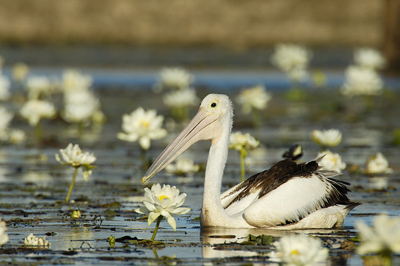
Australian Pelican – Cumberland Dam, Georgetown, Queensland
I spent two days photographing at a large pond just west of Georgetown in Northern Queensland and had two extremely productive days. The pond itself held a variety of waterbirds and a small pool below the dam was used by a number of songbirds as a watering hole. The pond was covered in lilies which made for interesting images of pelicans and jacanas as well as a few species of duck. This is one of my favorite images from one of my afternoon shoots.

Australian Pratincole – Thargomindah, Queensland
Sometimes photography doesn’t always get you to the remote and gorgeous locations. This particular image was taken in the middle of an empty lot in the town of Thargomindah in southwest Queensland. Pratincoles are rather strange birds and something I have no experience with in North America. They are similar to a sandpiper but as far as I know prefer arid areas and are often found along roadsides in deserts. I had seen a number of them during my trip but had not photographed any so was pleased to find this one that was relatively cooperative one afternoon.
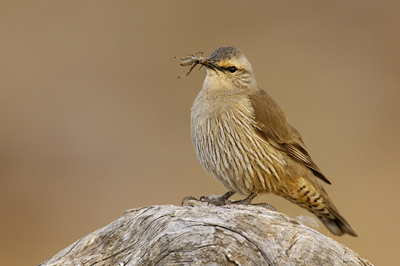
Brown Treecreeper – Brachina Gorge, Flinders Ranges National Park, South Australia
I have developed a certain affinity for treecreepers during the past few months. I am not exactly sure why but I like them and I have had great success photographing three species so far. During my stay in the Flinders Ranges, a pair of Brown Treecreepers hunted around my campsite each morning and spent a fair amount of time sitting on a fallen tree which made for a lovely porch. This is a fairly simple, straight forward portrait but the complimentary background and the cricket make the image for me.
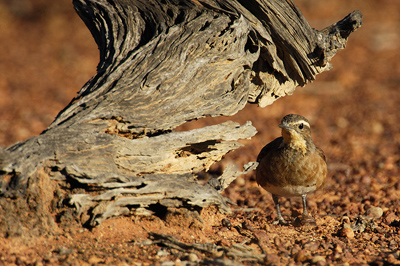
Chestnut-breasted Quail-Thrush – Nine Mile Bore, Eulo, Queensland
One of the specialties of the mulga country of southwest Queensland is the Chestnut-breasted Quail-Thrush. I managed to find a pair of them without too much trouble during my first morning at Nine Mile Bore but could never get very close to these ground dwelling birds. Instead I decided to try and include some habitat and make an image that was a bit different than the standard portrait of the treecreeper above.
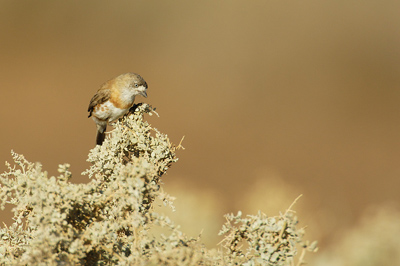
Chestnut-breasted Whiteface – Lyndhurst Station, Strzelecki Track, South Australia
The Chestnut-breasted Whiteface is one of those birds that are simply tough to see. They are found in a handful of locations but most are totally inaccessible to birders and really there is only one relatively reliable, somewhat easily accessible location and that is at Lyndhurst Station, just up the Strzelecki Track. I ended up spending a full day searching for these birds and I was almost ready to give up. It had been an overcast day with a pretty much constant sprinkling of rain and I was wet and tired of searching. By late afternoon the sky cleared and the sun popped out, lighting up the desert with gorgeous colors. Right about that time I found a part of Thick-billed Grasswrens and as they flew away three Chestnut-breasted Whitefaces took their place on the same bush. Fortunately I was already focused on the bush and all I had to do was press the shutter and this was the result.
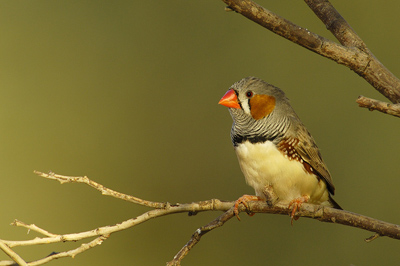
Zebra Finch – Diamantina National Park, Queensland
The Zebra Finch is probably recognizable to anyone that has spent any time in a pet store as they are one of the most common and inexpensive caged birds, at least in the United States. Here however, they are birds of the arid interior and travel in large flocks feeding on the ground and in low bushes. I was able to photograph several of these birds as they came in to drink at a small waterhole in Diamantina National Park in the Channel Country of western Queensland.
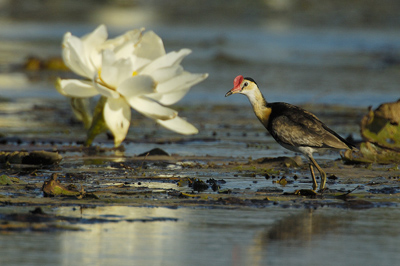
Comb-crested Jacana – Cumberland Dam, Georgetown, Queensland
This is another image from my time at Cumberland Dam. These are interesting birds with enormous toes which allow them to walk across the top of lily pads and lotus plants, giving them the nickname of Lotusbirds. Adult birds, like this one, have red crests of bare skin on their forehead, while in juveniles the crest is absent. The Comb-crested Jacana is found pretty much on any water body with adequate lilies or lotus plants in the northern part of the country.
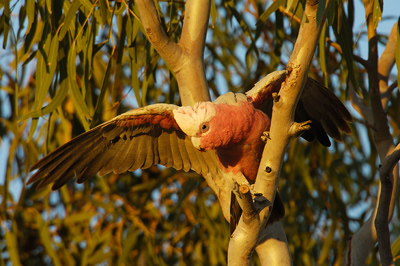
Galah – Diamantina National Park, Queensland
Galahs are some of the most common parrots in the inland parts of Australia and their subtle pink undersides and white crests are unmistakable. Despite them being seemingly everywhere, I have had a hard time getting photos of them for various reasons so I was thrilled to be able to photograph them at Diamantina National Park where a large flock was roosting in trees around a waterhole. They are quite animated birds and I really like the pose of this bird.
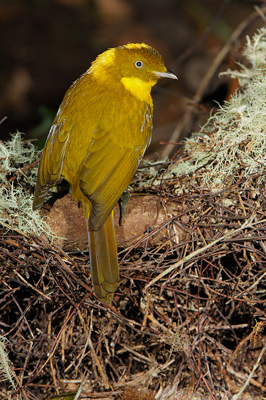
Golden Bowerbird – Paluma, Queensland
The bowerbirds of Australia and New Guinea are some of the most intriguing birds I have come across. The males build large structures, decorate them, and then display in front of them in order to attract a mate. The Golden Bowerbird is probably the most beautiful of these birds, at least the Australian ones. It is found in the rainforests of tropical north Queensland and the gold plumage is amazing to see in a dense, dark rainforest. This particular bird is sitting on the crosspiece of his bower between two towers and is surrounded by the lichen with which he has decorated the crosspiece.
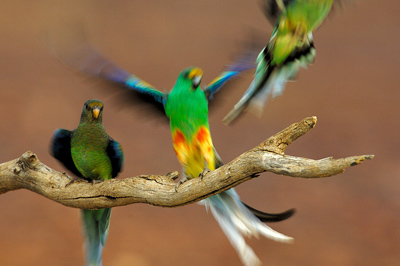
Mulga Parrots – Nine Mile Bore, Eulo, Queensland
This image is a bit different than most of the other images I have posted but I am curious to know what others like about it. Over the past few years I have become quite fond of motion blurred images and am slowly compiling a series of them, some made on purpose and some pure coincidence. This image came about because of the low light of a heavily overcast evening. I was photographing parrots as they came in to drink and while I do have sharp images of the adult male (center bird), my favorite image of the series was this one as the three took off. I particularly like the sequence of one bird in the air (a female I believe), the male in the center just leaving, and the juvenile bird preparing to take off.
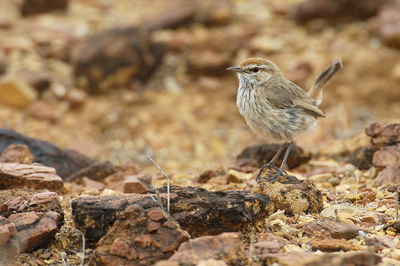
Rufous Fieldwren – Lyndhurst Station, Strzelecki Track, South Australia
This fieldwren was photographed during my search for the Chestnut-breasted Whitefaces at Lyndhurst Station. I rather like the subtle tones of this image. To me it illustrates how well these birds can blend in with the surrounding landscape.

Wedge-tailed Eagle – Strzelecki Track, South Australia
Photographing while driving down the somewhat rough tracks of the Australian outback can be a bit difficult. I typically am watching the road for potholes or sharp rocks so I end up missing a lot of the birds on the road’s edge. However, a bird the size of a Wedge-tailed Eagle simply can’t be missed. This particular bird was feeding on carrion on the side of the road and when I approached it flew to a nearby bush. After a couple days on the road I quickly learned that if I wanted to photograph things along the side of the road I had to keep the lens in the front seat or else they would be gone by the time I got out and set up. This particular image came as a result of that lesson.
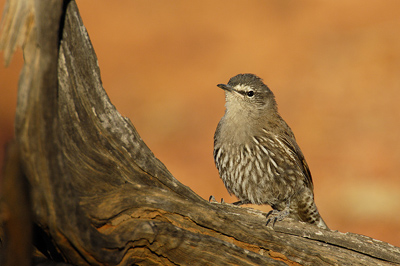
White-browed Treecreeper – Nine Mile Bore, Eulo, Queensland
White-browed Treecreepers are another specialty of the mulga and mallee habitat of the interior southeast. These birds are sometimes difficult to find as they are a bit nomadic but I had no problem finding them, in fact there were several birds that seemed to always be around while I was at Nine Mile Bore. I spent time photographing two different mornings and this is one of my favorite images from those mornings.
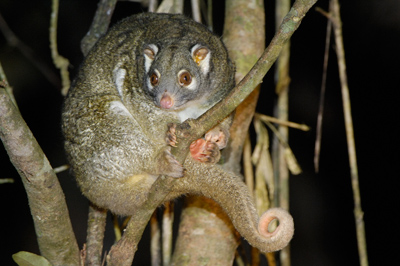
Green Ringtail Possum – Cathedral Fig Tree National Park, Atherton Tableland, Queensland
As I mentioned earlier, one of my favorite experiences this month was a spotlighting tour with Alan Gillanders on the Atherton Tableland. We spent a couple hours walking through the rainforest looking for the many nocturnal mammals that are found in the area. Alan’s specialty is the Lumholz Tree Kangaroo and while we did see one, my photos were not very good. My favorite photo from the evening was this Green Ringtail Possum, which is only found in that area. Not only does this image show the entire animal unobscured by leaves, it illustrates where the animal gets its name.
Until next month be sure to check out the website as it has just been fully updated!
